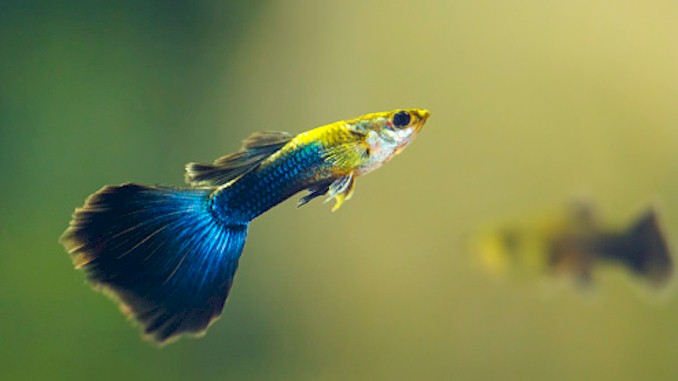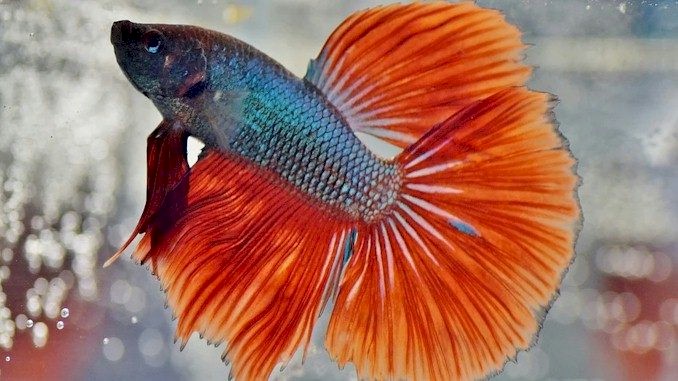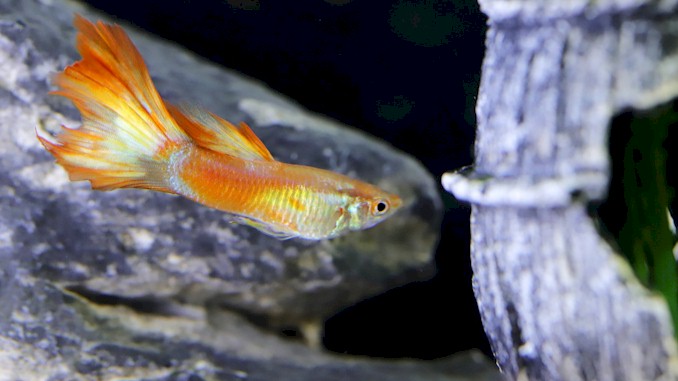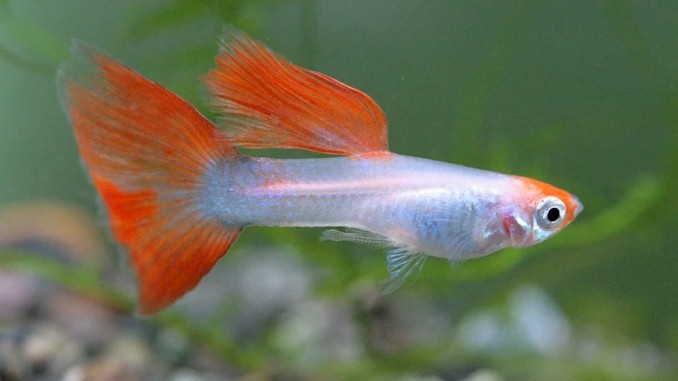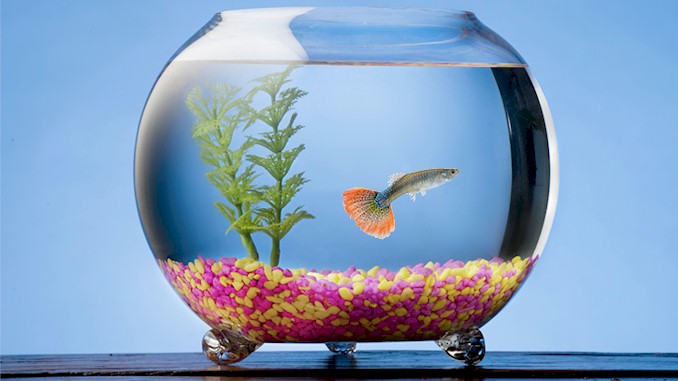The Real Reasons Why Guppies Swim Up and Down Against Glass
As an avid fan of guppies, I appreciate the beauty and charm they bring to my aquarium. Typically, my guppies are healthy and happy, but there have been occasions where their behavior has left me puzzled. One such instance occurred when I observed my guppies frantically swimming up and down against the tank glass. Alarmed by their odd behavior, I sought out answers by scouring the internet for information on why guppies exhibit this erratic swimming pattern. After conducting extensive research, I discovered valuable insights that I believe will be useful for all guppy owners facing similar situations. In this article, I will share my findings on the possible reasons behind guppy glass surfing and offer practical solutions to prevent or address this behavior.
Guppy fish swimming up and down against the tank glass is a common behavior in fish that can be caused by a variety of factors, including water quality, lack of space, poor diet, bullying, loneliness, and underlying diseases.
This behavior is called glass surfing or pacing, and it indicate that your fish are stressed or unhappy. If you want to prevent or stop glass surfing in your guppies, you need to identify and address the root cause of their stress. In the following paragraphs, I will share with you some of the most common reasons why fish glass surf and how you can fix them. You will also learn some tips and tricks to make your fish happier and healthier in their aquarium. So, keep reading and discover how to improve your fish’s well-being.
What Causes Glass Surfing in Fish? Understanding the Factors that Contribute to this Behavior
As mentioned earlier, glass surfing is a common behavior in fish that can be caused by a variety of factors. Understanding these factors is crucial to ensuring the well-being of your fish and addressing this behavior effectively. Some of the most common causes of glass surfing include unfavorable tank conditions, poor water quality, overcrowding, and loneliness.
Unfavorable tank conditions are one of the main reasons why fish may exhibit glass surfing behavior. Fish require a stable and comfortable environment to thrive, and when their living conditions are not optimal, they may become stressed and anxious. Factors such as improper lighting, temperature fluctuations, lack of hiding places or plants, and noisy surroundings can all contribute to an unfavorable tank environment.
Poor water quality is another significant factor that can cause glass surfing behavior. Fish live in water, and the quality of that water plays a crucial role in their health and well-being. High levels of ammonia, nitrite, or nitrate can be harmful to fish, causing stress and illness. Additionally, fluctuations in pH levels can also cause stress and discomfort, leading to glass surfing behavior.
Overcrowding is another common reason why fish may exhibit glass surfing behavior. When fish are living in a tank that is too small for their size or number, they may become stressed and anxious due to the lack of space. This stress can manifest as glass surfing behavior, as the fish try to find a way to escape their cramped environment.
Loneliness is another factor that can contribute to glass surfing behavior in fish. Many species of fish are social creatures and require interaction with other fish to thrive. When fish are kept alone or in a small group, they may become lonely and stressed, leading to glass surfing behavior.
In conclusion, understanding the different factors that contribute to glass surfing behavior in fish is crucial for maintaining the health and well-being of your aquatic pets. Factors such as unfavorable tank conditions, poor water quality, overcrowding, and loneliness can all cause stress and anxiety in fish, leading to glass surfing behavior. In the next section, we will explore how to recognize this behavior in your fish and what signs and symptoms to look for.
How to Recognize Glass Surfing in Your Fish: Signs and Symptoms to Look For
Recognizing glass surfing behavior in your fish is crucial for identifying and addressing any underlying issues that may be causing stress and discomfort. Here are some signs and symptoms to look for when trying to identify glass surfing behavior:
- Fish repeatedly swimming up and down or back and forth along the sides of the tank, often against the glass.
- Fish remaining close to the surface of the water or at the bottom of the tank.
- Fish displaying unusual or erratic behavior, such as darting around the tank or hiding in corners.
- Fish showing signs of physical distress, such as frayed fins or a loss of color.
If you notice any of these signs or symptoms, it’s important to take action to address the underlying cause of the behavior. In some cases, the behavior may be a temporary response to a stressful situation, such as a water change or the introduction of new fish to the tank. However, if the behavior persists, it may be a sign of a more serious issue that needs to be addressed.
One possible cause of glass surfing behavior is poor water quality. If you suspect that this may be the issue, it’s important to test the water in your tank regularly and make sure that the levels of ammonia, nitrite, and nitrate are within safe ranges for your fish. Additionally, be sure to maintain a consistent water change schedule to ensure that your fish are living in clean and healthy water.
Another possible cause of glass surfing behavior is overcrowding. If your tank is too small or contains too many fish, your fish may become stressed and anxious due to the lack of space. In this case, consider upgrading to a larger tank or reducing the number of fish in your current tank to provide your fish with more space and a more comfortable living environment.
If you suspect that loneliness may be the cause of your fish’s glass surfing behavior, consider adding more fish to your tank or providing your fish with hiding places or plants to create a more stimulating and natural environment. Additionally, make sure to provide your fish with a consistent feeding schedule and a balanced and nutritious diet to ensure their overall health and well-being.
As you can see, recognizing glass surfing behavior in your fish is essential for identifying and addressing any underlying issues that may be causing stress and discomfort. By being vigilant and attentive to your fish’s behavior, you can take proactive steps to maintain a healthy and stress-free environment for your aquatic pets. In the next section, we will explore tips for preventing glass surfing behavior in the first place.
Preventing Glass Surfing: Tips for Creating a Healthy and Stress-Free Environment for Your Fish
Prevention is always better than cure, and this is especially true when it comes to glass surfing behavior in fish. By taking proactive steps to create a healthy and stress-free environment for your fish, you can prevent this behavior from occurring in the first place. Here are some tips for creating a healthy and stress-free environment for your fish:
- Maintain good water quality: As mentioned earlier, poor water quality can be a significant contributor to glass surfing behavior in fish. To prevent this from happening, it’s crucial to maintain good water quality in your tank. Regularly test your water parameters and perform water changes as needed to keep your water clean and healthy.
- Provide adequate space: Overcrowding can cause stress and anxiety in fish, leading to glass surfing behavior. Make sure your fish have enough space to swim and play by providing a tank that is appropriately sized for the number and size of fish you have.
- Create a natural environment: Fish thrive in environments that mimic their natural habitats. Provide plenty of plants, rocks, and hiding places to create a natural and stimulating environment for your fish. This will help reduce stress and anxiety and prevent glass surfing behavior.
- Maintain consistent feeding: Feeding your fish a balanced and nutritious diet on a consistent schedule can help keep them healthy and stress-free. Overfeeding can lead to poor water quality and contribute to glass surfing behavior.
- Introduce new fish slowly: When introducing new fish to your tank, do so slowly and carefully. Quarantine new fish before adding them to your main tank to prevent the spread of disease. Gradually introduce new fish to your tank to reduce stress and prevent aggressive behavior.
- Address underlying health issues: If your fish are displaying signs of illness or disease, address the issue promptly to prevent further stress and discomfort. Observe your fish regularly for any changes in behavior or physical appearance, and seek veterinary care if necessary.
As you have learned, preventing glass surfing behavior in your fish is essential for maintaining a healthy and stress-free environment for your aquatic pets. If you consumed and applied the tips outlined above properly and being attentive to your fish’s needs, you can create a comfortable and stimulating environment that will promote their health and well-being. If you have any concerns or questions about glass surfing behavior or fish care in general, don’t hesitate to reach out to a qualified aquatic veterinarian or fish expert for guidance.
Addressing Underlying Causes of Glass Surfing: Overcrowding, Bullying, and Other Issues
While prevention is always the best approach, sometimes glass surfing behavior in fish can still occur, despite your best efforts. In these cases, it’s important to identify and address any underlying causes of stress or discomfort in your fish to help them feel more comfortable and prevent further glass surfing. Here are some common underlying causes of glass surfing and how to address them:
- Overcrowding: If your tank is overcrowded, your fish may be stressed and anxious, leading to glass surfing behavior. Consider upgrading to a larger tank or reducing the number of fish in your current tank to provide more space and reduce stress levels.
- Bullying and aggression: If one or more fish in your tank are exhibiting aggressive behavior, it can cause stress and anxiety in other fish, leading to glass surfing. Remove any aggressive fish from your tank or separate them from other fish to prevent further stress and discomfort.
- Water quality issues: Poor water quality can be a major contributor to glass surfing behavior in fish. Address any water quality issues in your tank by performing water changes and maintaining good filtration to keep your water clean and healthy.
- Underlying health issues: In some cases, glass surfing behavior in fish may be a symptom of an underlying health issue, such as a parasite or infection. Observe your fish closely for any signs of illness or disease, and seek veterinary care if necessary.
- Inadequate diet: Providing your fish with a balanced and nutritious diet is essential for their overall health and well-being. Ensure that you are feeding your fish a high-quality diet that meets their nutritional needs and is appropriate for their species.
- Inadequate hiding places: Fish need plenty of hiding places to feel safe and secure in their environment. Provide your fish with plenty of plants, rocks, and other hiding places to reduce stress and prevent glass surfing behavior.
As I’ve shown you, addressing underlying causes of stress and discomfort in your fish is essential for preventing and reducing glass surfing behavior. By identifying and addressing any issues in your tank and being attentive to your fish’s needs, you can help create a comfortable and stress-free environment for your aquatic pets.
What to Do if Your Fish is Glass Surfing: Steps to Take to Ensure Your Fish’s Health and Well-Being
If you notice that your fish is exhibiting signs of glass surfing, it’s important to take action to address the underlying causes and ensure your fish’s health and well-being. Here are some steps you can take:
- Check Water Quality: The first step is to check your aquarium’s water quality. Poor water quality can lead to stress in fish, which can trigger glass surfing. Use a reliable water testing kit to check for ammonia, nitrite, nitrate, pH levels, and other parameters. If you find any issues, take the necessary steps to correct them immediately.
- Review Tank Conditions: Assess the overall tank conditions to ensure that they meet the needs of your fish. Factors such as water temperature, lighting, and filtration can all impact the health and well-being of your fish. Make sure that your tank is properly equipped and maintained to ensure optimal conditions.
- Address Underlying Causes: As we discussed earlier, glass surfing can be caused by a variety of underlying issues such as overcrowding, bullying, or illness. Address these issues promptly to reduce stress and prevent further problems.
- Provide Hiding Places: Adding plants, rocks, and other hiding places to your aquarium can help reduce stress in fish by providing them with a sense of security. Make sure that these hiding places are appropriately sized and placed so that your fish can use them comfortably.
- Consult a Vet: If your fish’s glass surfing behavior persists despite your best efforts, consult a veterinarian who specializes in aquatic animals. They can help identify underlying health issues and provide appropriate treatment.
By taking these steps, you can help reduce stress in your fish and create a healthier, more stress-free environment for them to thrive in.
How do you calm a stressed fish?
There are various ways to calm a stressed fish depending on the underlying cause of their stress. Here are some effective ways to help calm a stressed fish:
- Ensure Optimal Water Quality: Poor water quality can be a significant source of stress for fish. To maintain optimal water conditions, you should regularly clean the tank and replace the water to ensure that the water quality is within the acceptable parameters. You can also use a water conditioner to remove harmful chemicals like chlorine and chloramines.
- Provide Adequate Hiding Spots: Giving your fish ample hiding spots in the tank can help them feel secure and reduce their stress levels. Adding plants, rocks, and caves to the tank can provide a safe haven for your fish to retreat to when they feel threatened.
- Maintain Consistent Light and Noise Levels: Sudden changes in light and noise levels can cause stress to fish. It’s essential to maintain a consistent environment for your fish, ensuring that the light and noise levels remain constant.
- Monitor Tank Mates: If you have multiple fish in your tank, monitor their behavior to ensure that there is no aggression or bullying. Separating aggressive fish from the rest can help reduce stress levels among the other fish.
- Feed a Balanced Diet: Providing your fish with a balanced and varied diet can improve their health and reduce their stress levels. Overfeeding can lead to excess waste, which can deteriorate the water quality in the tank.
- Introduce a Soothing Environment: Adding aquarium decor like plants, driftwood, or other natural elements can help create a calming environment in the tank. Additionally, playing soft music or white noise near the tank can help soothe your fish.
As I’ve shown you, calming a stressed fish requires a combination of proper environmental conditions, healthy diet, and careful monitoring of tank mates. By creating a stress-free environment, you can help your fish live a long and healthy life.
Related Questions:
What do guppies like in their tank? Guppies are tropical fish that need a spacious, filtered, heated and planted tank to thrive. Some basic requirements for guppies are: A tank size of at least 10 gallons for a small group of guppies. A water filter to keep the water clean and oxygenated. A water heater to maintain a temperature of 75-82°F (24-28°C). Plants and other decorations to provide hiding places and enrichment.
How do I know if my fish are happy in a new tank? There are some signs that can indicate if your fish are happy in a new tank, such as: Swimming actively and exploring the tank. Eating regularly and eagerly. Breathing normally and not gasping at the surface. Looking healthy and having bright colors. Socializing effectively with other fish.
Why do fish swim facing down? Fish swim facing down when they have a problem with their swim bladder, which is an organ that helps them control their buoyancy. Some possible causes of swim bladder issues are: Sickness or injury. Lack of oxygen. Stress or anxiety. Constipation or poor diet. Is your fish swimming facing down? If so, you should check the water quality, feed them a balanced diet, and consult a veterinarian if needed.

